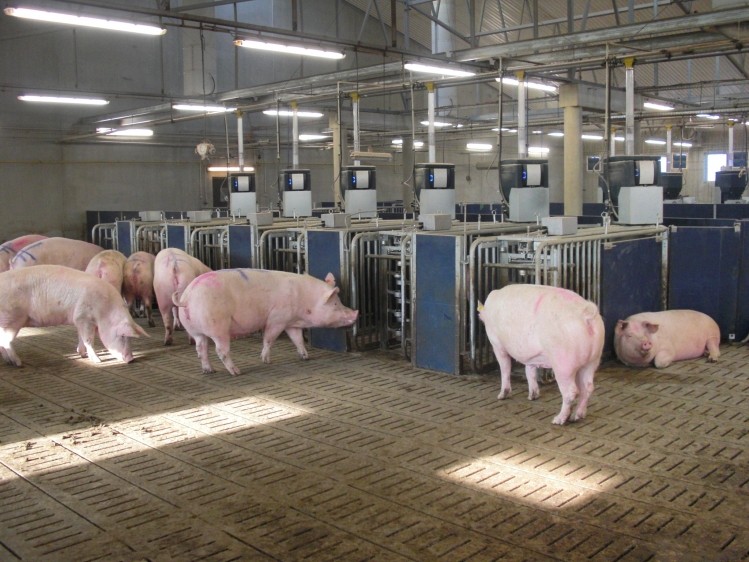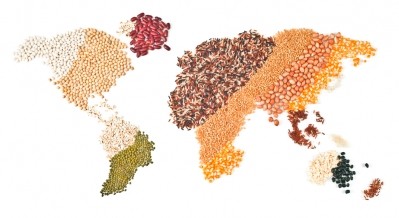China sees increasing reliance on imported feed, expanding trade partners

A recent report from the US Department of Agriculture’s Economic Research Service detailed the growth of the Chinese feed industry and the developments behind the country’s growing demand for imported animal feed.
“They are already at a point where they can’t provide all the feed (needed), and as the report points out, China is almost completely dependent on soybeans, but they’re self-sufficient in corn,” said Fred Gale, senior economist for the ERS. “However, even in corn, this year, the government has acknowledged that their corn production isn’t sustainable.”
The government recently announced programs to cut back on grasslands and marginal lands being used to grow corn, as there have been pest problems and an increasing use of chemical treatments, he said. A plan is in place to have zero growth in agricultural chemical use by 2020.
“They’ve gone beyond what the land and water can support,” he told FeedNavigator.
However, while China may be set to increase its imports of feed and feed ingredients, it also may be seeking trade with more countries than it has in the past, he said.
Although America will remain a leading supplier to China and may see growth of commodity use, particularly of soybeans, there are challenges to that economic relationship, said Gale. “In the short term, with the value of the dollar, the US is facing a challenge in keeping market share,” he added.
Part of the country’s strategy for moving forward has been to encourage companies to invest overseas in the production of meat and feed grains, he said. These have included investing in the dairy and beef industries in Australia and New Zealand along with Ukrainian and Bulgarian corn and grain markets.
"Some Chinese feed companies may establish operations in the United States or other countries where they have better access to raw materials," said officials in the report. "As raw material and production costs rise in China, feed companies may shift from procuring raw materials overseas to processing meat and dairy products in countries with lower feed costs."
Growth of feed use
China has become the largest producer of animal feed and livestock products, said officials in the report.
“During 2014/15, China was the world’s leading importer of soybeans, rapeseed, distillers’ grains, sorghum, barley, and fish meal, all of which are used directly or indirectly as animal feed,” they said. “Corn—also used predominantly for animal feed—has surpassed wheat and rice to become China’s largest single crop. China is also a top producer and consumer of feed additives like lysine.”
Feed output grew from 5m metric tons in 1982 to 198m metric tons in 2014, they said. Import of some feed ingredients also grew, with purchases of soybean meal going from 2.4m metric tons in 1996 to more than 50m metric tons in 2014.
One factor driving the use of animal feed has been a move away from individual producers of animals to larger farms, said Gale.
“Backyard production is declining rapidly because of the way the Chinese economy is changing,” he said. “It’s not profitable to raise animals on a small scale anymore.”
The government also has been supporting the development of “above-scale farms” as part of an effort to improve food safety and pollution while managing disease, he said.
“The one that’s furthest along is the chicken (industry), much like the US, and that’s been industrializing in China for 20-25 years, and pig production is industrializing rapidly,” he said. “And those are the main consumers of commercial feed.”
Cost increases
In the past few years, domestic prices for corn have been higher than imported feed ingredients like sorghum, barley and dried distillers grains (DDGs) said Gale.
When global corn prices rose, China instituted a price support system to encourage farmers to grow corn, he said. But when prices dropped, the internal high prices remained.
“They have a serious problem now, where their prices are 25-30% higher than import grains and oil seeds, and they have a big surplus of corn,” he said.
While import quotas appear to be part of their solution to manage cheaper international corn, the country still needs to move through some of the stock pile, he said. “The US industry is waiting to see if they will limit imports of sorghum or distillers dried grains,” he added.
Farm margins have also been tight because of increasing wages, said Gale. Other factors that have been increasing expenses include land rent, and regulations regarding pollution, manure and farm location.









